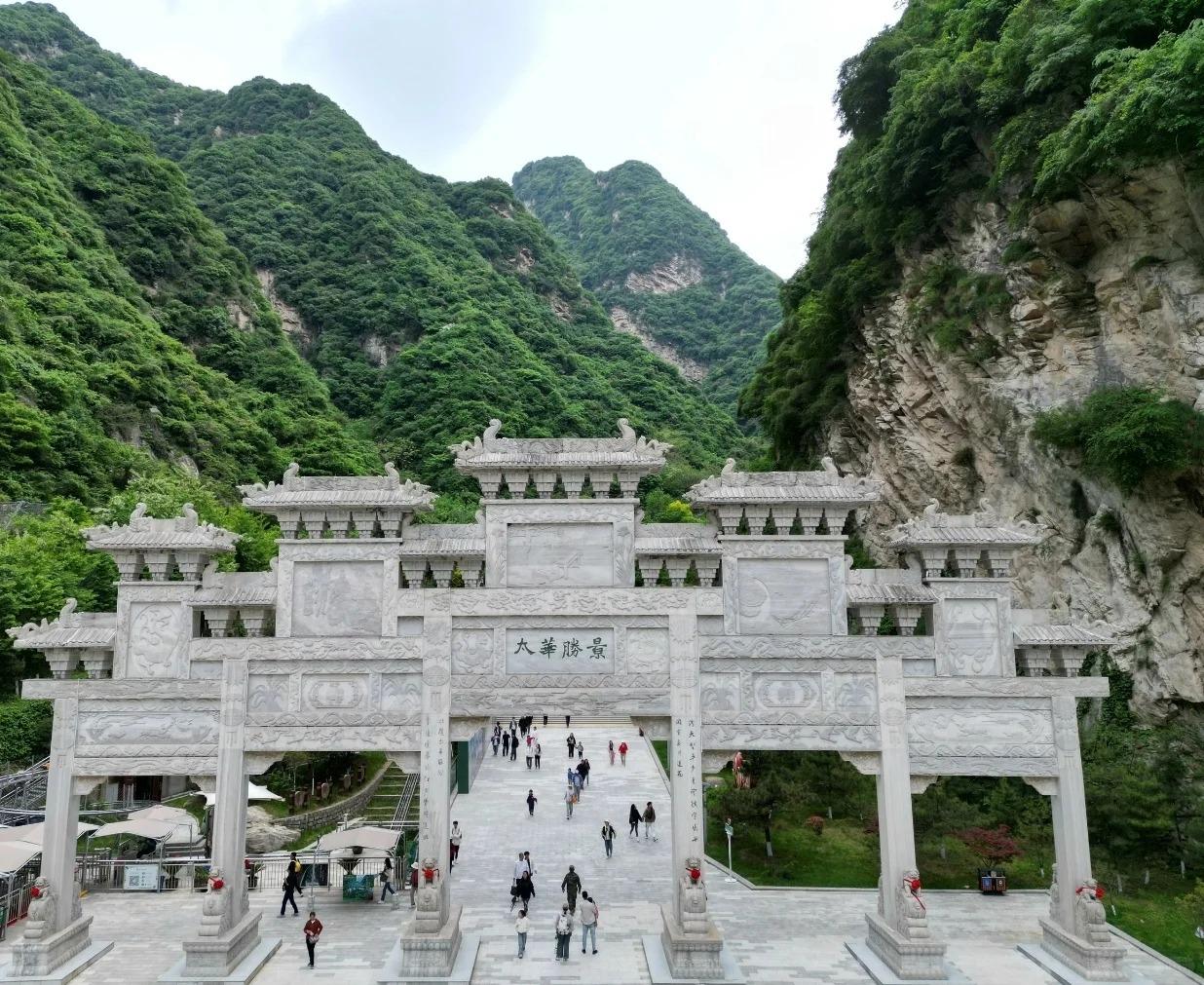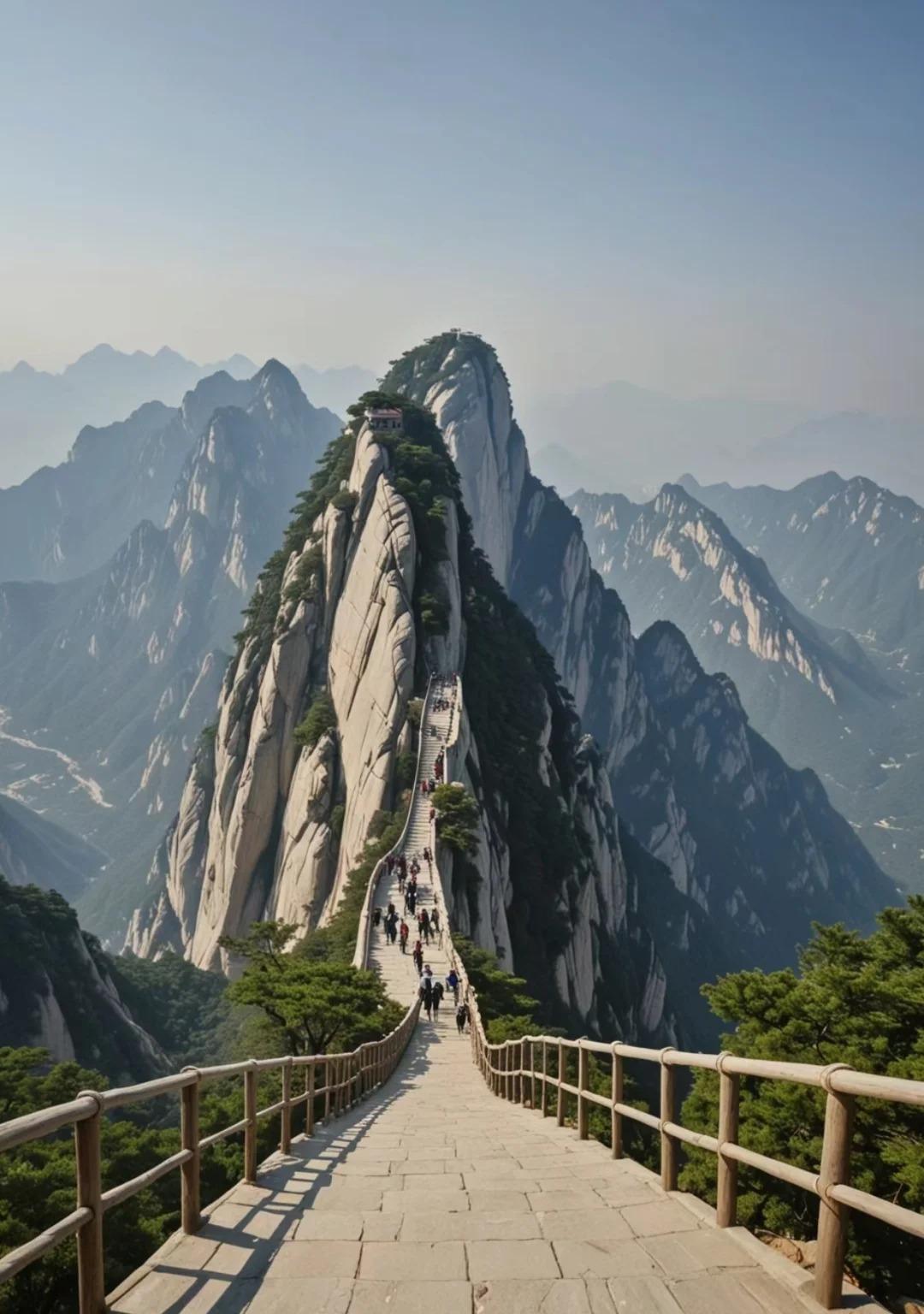Visiting Information
| Information | Details |
|---|---|
| Chinese Name | 华山 (Huà Shān) |
| Location and Address | Huayin City, Weinan, Shaanxi Province, China |
| Opening Time/Hours | Open 24 hours |
| Entrance Fee | March to November: 180 CNY December to February: 100 CNY Cable car (optional): 80-150 CNY one-way |
| How to Get There | By Train: Take a train to Huashan North Station, then a shuttle bus to the mountain By Bus: Take a bus from Xi’an to Huashan Visitor Center By Taxi: About 1.5 hours from Xi’an city center |
| Best Time for Visit | April to October for the best weather conditions |
| Contact Info | Phone: +86 913 4361 234 Email: Not available |
Overview
Mount Huashan, located in Huayin City, Shaanxi Province, is one of China’s Five Great Mountains and is renowned for its breathtaking scenery, steep cliffs, and challenging hiking trails. Rising to 2,154 meters (7,067 feet) at its highest peak, Huashan is famous for its five main peaks: East, South, West, North, and Central. The mountain has been a place of religious significance for centuries and is now a popular destination for both pilgrims and thrill-seeking tourists. Known for its dangerous cliff-side paths and the infamous “plank walk in the sky,” Mount Huashan offers visitors an unforgettable blend of natural beauty, historical significance, and adrenaline-pumping experiences.
Historical Background
Mount Huashan has a rich history dating back over 2,000 years. It has been considered a sacred Taoist mountain since at least the 2nd century BCE. During the Tang Dynasty (618-907 CE), it became an important center for Taoist practice and cultivation. The mountain’s strategic location also made it a significant military stronghold throughout various periods in Chinese history. Many emperors visited Huashan to perform sacrificial rituals, further cementing its importance in Chinese culture. The development of the treacherous paths and stairs along the mountain’s steep cliffs began during the Song Dynasty (960-1279 CE) when Taoist temples were constructed on the peaks. Over the centuries, poets, scholars, and pilgrims have been drawn to Huashan, leaving behind a legacy of literature, art, and spiritual traditions. In modern times, while maintaining its religious significance, Mount Huashan has evolved into a major tourist attraction, known for its challenging hiking trails and spectacular views.
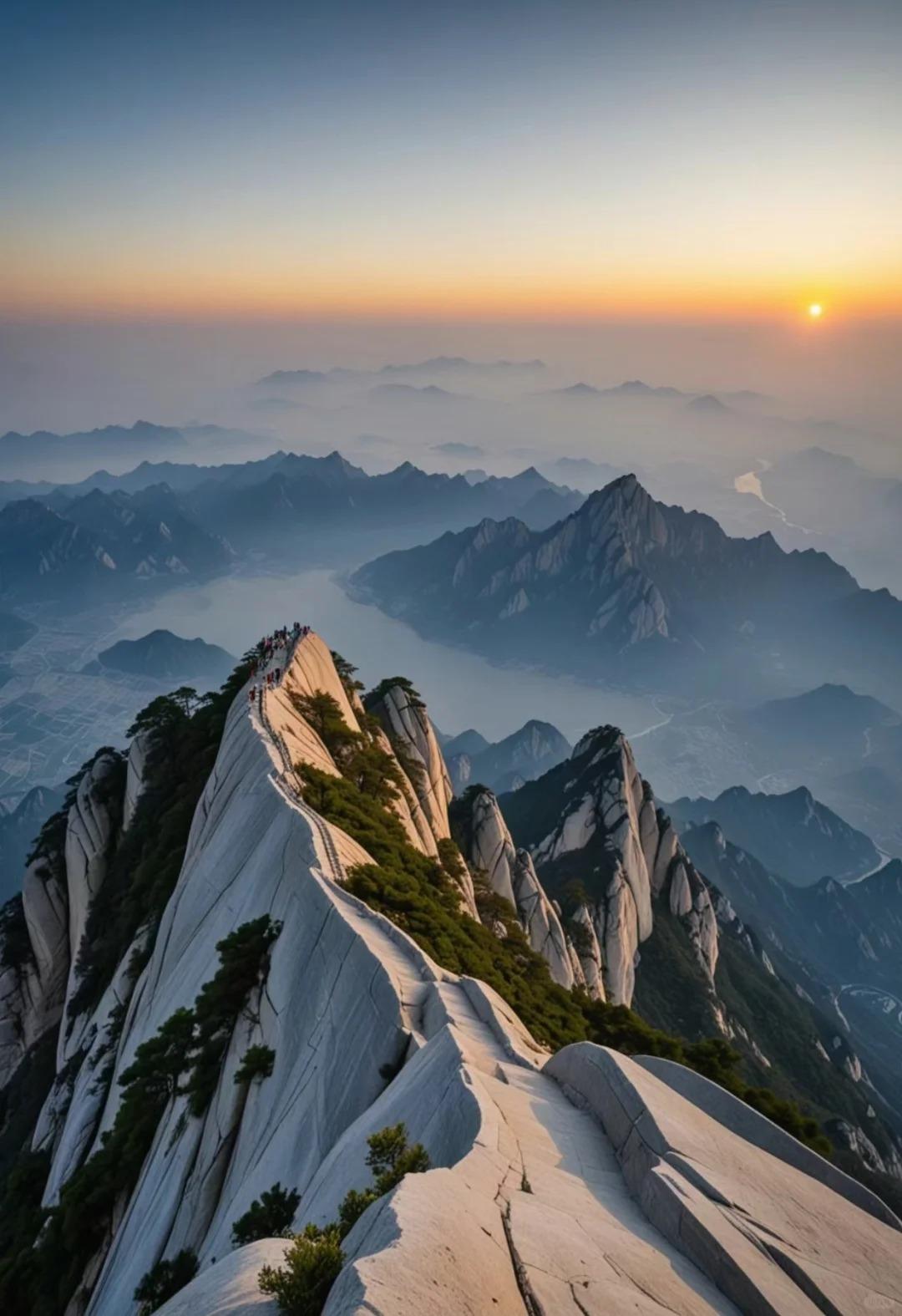
Architectural Features
- Taoist Temples: Mount Huashan is home to several ancient Taoist temples, with the most famous being the Jade Spring Temple at the foot of the mountain. These temples, with their traditional Chinese architecture featuring upturned eaves, intricate wooden carvings, and vibrant colors, serve as important religious sites and showcase the mountain’s spiritual significance. The temples house valuable artifacts, sacred scriptures, and offer a glimpse into Taoist practices and traditions.
- Cliff-side Paths: One of Huashan’s most distinctive features is its network of narrow paths carved into the sides of sheer cliffs. These paths, some of which are only a few feet wide with precipitous drops on one or both sides, include the famous Changkong Zhandao (长空栈道) or “Plank Walk in the Sky.” This path consists of wooden planks bolted into the cliff face, providing a heart-stopping experience for adventurous visitors. These paths are testament to the ingenuity and determination of ancient builders who created access to the mountain’s peaks.
- Stone Staircases: Thousands of stone steps have been carved into the mountain, creating a network of trails that connect the various peaks and attractions. These staircases, often steep and narrow, are engineering marvels that have withstood centuries of use and harsh weather conditions. They range from relatively easy climbs to nearly vertical ascents, providing varied challenges for hikers and pilgrims.
- Cable Car Systems: To improve accessibility, modern cable car systems have been installed on Mount Huashan. These include the West Peak cable car and the North Peak cable car. While not historical features, these engineering achievements blend into the landscape and provide spectacular aerial views of the mountain. They also make it possible for less physically able visitors to experience the beauty of Huashan’s higher elevations.
- Chess Pavilion: Located on the East Peak, the Chess Pavilion is a small, traditional Chinese structure that legend says was the site of a chess game between a Taoist immortal and a human. This picturesque pavilion, perched on a precarious outcrop, offers stunning views and is a popular spot for photographs. Its architecture exemplifies the harmony between human constructions and the natural landscape that is characteristic of traditional Chinese design.
Cultural Importance
Mount Huashan holds immense cultural importance in Chinese history and spirituality. As one of the Five Great Mountains of China, it has been revered as a sacred site for Taoism for over two millennia. The mountain is associated with numerous legends and mythical tales, including stories of immortals and divine beings. In Taoist tradition, Huashan is believed to be a place where one can achieve spiritual enlightenment and immortality. The mountain has inspired countless works of art, poetry, and literature throughout Chinese history, with many famous scholars and artists having visited or written about Huashan. Its challenging paths and peaks have also come to symbolize perseverance, courage, and the pursuit of lofty goals in Chinese culture. The annual Huashan Festival, celebrated on the second day of the second lunar month, attracts pilgrims and tourists alike, showcasing traditional rituals and performances. In modern times, Mount Huashan continues to be a symbol of Chinese natural beauty and cultural heritage, attracting visitors from all over the world who seek to experience its unique blend of breathtaking scenery, spiritual significance, and thrilling adventure.
Surrounding Attractions
- Huashan Hot Springs: Located at the foot of Mount Huashan, these natural hot springs offer a relaxing experience for visitors. The springs are rich in minerals and are believed to have therapeutic properties. After a challenging hike on the mountain, many tourists find the hot springs to be a perfect way to soothe tired muscles and unwind. The area around the hot springs has been developed into a resort with various pools of different temperatures and mineral compositions.
- Xiyue Temple: Situated at the foot of Mount Huashan, Xiyue Temple is one of the oldest and largest Taoist temples in China. Originally built during the Qin Dynasty (221-206 BCE), it has been expanded and renovated many times over the centuries. The temple complex covers an area of over 100,000 square meters and features impressive architecture, including ornate halls, pavilions, and courtyards. It’s an important site for understanding the religious and cultural significance of Mount Huashan.
- Huashan Mysterious Grottoes: These ancient grottoes, located near the base of Mount Huashan, date back to the Northern Wei Dynasty (386-534 CE). They consist of a series of man-made caves carved into the mountainside, featuring Buddhist statues and relief carvings. The grottoes provide insight into the Buddhist influence in the area and showcase the artistic styles of ancient Chinese sculpture.
- Yuquan Yuan (Jade Spring Courtyard): This scenic area is located at the southern foot of Mount Huashan. It’s named after a clear spring that is said to resemble liquid jade. The courtyard features beautiful gardens, traditional architecture, and several historical sites. It’s a popular spot for visitors to relax and appreciate the natural beauty of the area before or after climbing the mountain.
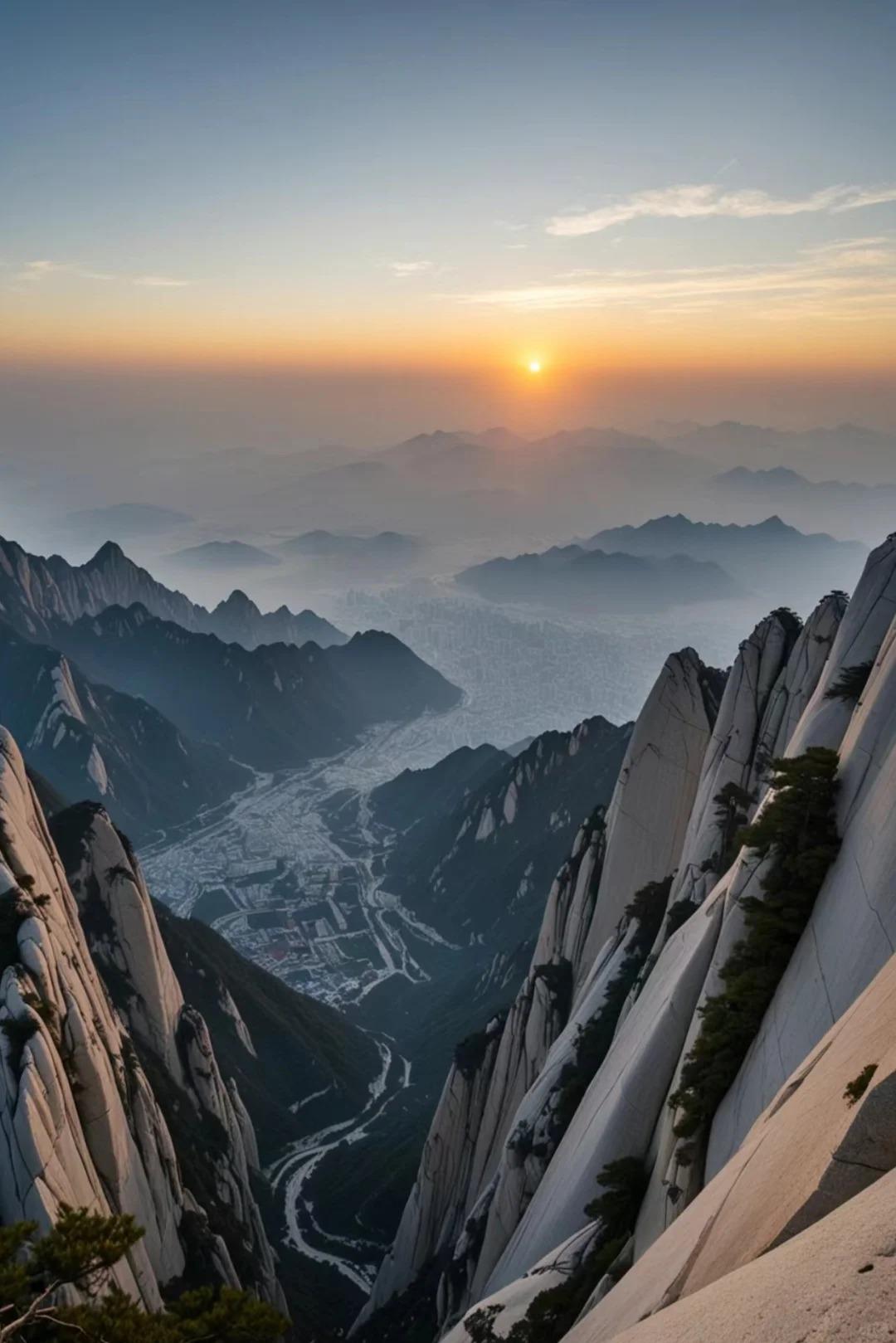
Photography Opportunities
- Sunrise from East Peak: The East Peak of Mount Huashan, also known as the Facing Sun Peak, is renowned for its spectacular sunrise views. Photographers can capture the sun emerging from a sea of clouds, casting golden light across the rugged landscape. The Chess Pavilion on this peak provides an excellent foreground element for composing dramatic shots that showcase both the natural beauty and cultural significance of the mountain.
- Plank Walk in the Sky: This infamous narrow plank path along the cliff face of South Peak offers heart-stopping photo opportunities. Photographers can capture the sheer drop and the bravery of hikers traversing this precarious route. The contrast between the ancient wooden planks and the vast, misty landscape below creates visually striking images that convey the thrill and danger associated with Mount Huashan.
- Sea of Clouds: Mount Huashan is frequently surrounded by a sea of clouds, particularly in the early morning or after rain. This phenomenon creates ethereal landscapes where peaks appear to float above the clouds. The West Peak and South Peak offer excellent vantage points for capturing these dreamlike vistas, allowing photographers to create images that seem almost otherworldly.
- Taoist Temples and Architecture: The various Taoist temples and traditional Chinese structures scattered across Mount Huashan provide excellent subjects for architectural and cultural photography. The juxtaposition of these ancient buildings against the backdrop of sheer cliffs and misty peaks offers opportunities for images that capture the harmony between human culture and nature in Chinese philosophy.
Modern Importance
- Tourism and Economic Impact: Mount Huashan has become a major tourist attraction, drawing millions of visitors annually. This influx of tourists has significantly boosted the local economy, creating jobs in hospitality, transportation, and retail sectors. The development of tourism infrastructure, including hotels, restaurants, and souvenir shops, has transformed the area around the mountain. The economic benefits extend beyond the immediate vicinity, contributing to the overall tourism industry of Shaanxi Province and playing a role in China’s domestic and international tourism strategies.
- Adventure Tourism: Known for its challenging hiking trails and the infamous “plank walk in the sky,” Mount Huashan has become a bucket-list destination for adventure seekers worldwide. This reputation has put it at the forefront of China’s growing adventure tourism sector. The mountain’s blend of natural beauty and physical challenge has made it a symbol of personal achievement for many, attracting a diverse range of visitors from casual hikers to extreme sports enthusiasts.
- Cultural Preservation: As a site of significant historical and cultural importance, Mount Huashan plays a crucial role in preserving and promoting traditional Chinese culture. The ongoing maintenance of ancient temples, pathways, and artifacts on the mountain contributes to the conservation of China’s tangible cultural heritage. Moreover, the mountain’s association with Taoism helps keep ancient spiritual practices and philosophies alive in the modern world, serving as a link between China’s past and present.
- Environmental Conservation: The popularity of Mount Huashan has brought increased attention to environmental conservation efforts. Management of the site involves balancing tourism development with the preservation of the mountain’s unique ecosystem. This has led to the implementation of various environmental protection measures and has raised awareness about the importance of sustainable tourism practices. The mountain serves as a case study for managing natural attractions in environmentally sensitive areas, influencing policies and practices in other parts of China and beyond.
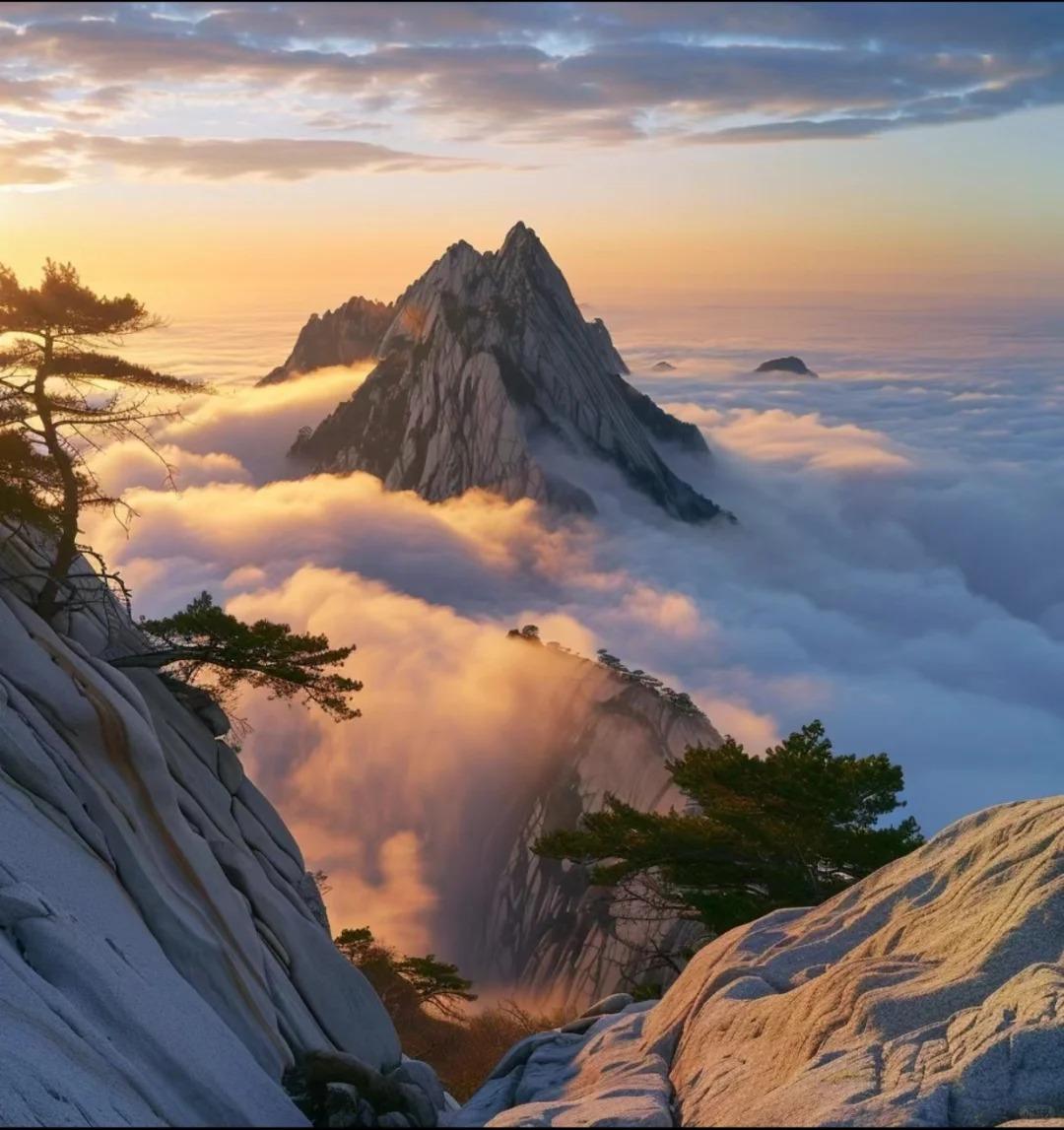
FAQ
- What is Mount Huashan famous for?
Mount Huashan is famous for its breathtaking scenery, steep cliffs, and challenging hiking trails. It’s known as one of China’s Five Great Mountains and is particularly renowned for its dangerous cliff-side paths, including the infamous “plank walk in the sky.” The mountain is also significant in Taoist religion and Chinese culture. - What’s inside Mount Huashan?
Mount Huashan features:
1. Five main peaks (East, South, West, North, and Central)
2. Ancient Taoist temples and shrines
3. Narrow hiking paths and steep staircases carved into the mountainside
4. The famous “plank walk in the sky”
5. Cable car systems for easier access
6. Scenic viewpoints and pavilions
7. Tea houses and rest areas - Is Mount Huashan free?
No, Mount Huashan is not free to visit. There is an entrance fee that varies depending on the season. As of 2024, the fee is 180 CNY from March to November and 100 CNY from December to February. Additional fees apply for cable car rides and some specific attractions within the mountain area. - Is Mount Huashan worth visiting?
Yes, Mount Huashan is generally considered well worth visiting. It offers stunning natural beauty, unique and thrilling hiking experiences, historical and cultural significance, and breathtaking views. However, it’s important to note that some paths can be physically demanding and potentially dangerous, so visitors should be prepared and consider their fitness levels. - What to do in Mount Huashan?
At Mount Huashan, you can:
1. Hike the various peaks and enjoy scenic views
2. Experience the thrilling “plank walk in the sky”
3. Visit ancient Taoist temples and shrines
4. Take cable car rides for easier access to peaks
5. Watch the sunrise from East Peak
6. Enjoy traditional tea at mountain-top tea houses
7. Take photographs of the stunning landscapes
8. Explore the Chess Pavilion and other historical sites
9. Participate in Taoist cultural activities (if available) - How do I get to Mount Huashan in the local city?
To get to Mount Huashan from Xi’an (the nearest major city):
1. By train: Take a high-speed train from Xi’an North Railway Station to Huashan North Station (about 30-40 minutes), then take a shuttle bus to the mountain entrance.
2. By bus: Take a tourist bus from Xi’an Railway Station or Xi’an East Bus Station directly to Huashan Visitor Center (about 2 hours).
3. By car or taxi: It’s about a 120 km drive from Xi’an to Mount Huashan, taking approximately 1.5 to 2 hours. - How to visit Mount Huashan?
To visit Mount Huashan:
1. Plan your trip in advance, considering the season and weather conditions
2. Decide whether to hike or take cable cars (or a combination)
3. Start early, especially if hiking, as it can take a full day to explore
4. Wear sturdy shoes and comfortable clothing suitable for hiking
5. Bring water, snacks, and sun protection
6. Consider hiring a guide for safety and information
7. Be prepared for crowds, especially during peak seasons
8. Follow all safety instructions, especially on dangerous paths
9. Allow enough time to descend before dark if hiking
10. Consider staying overnight on the mountain for a sunrise experience
11. Respect the natural environment and cultural sites


